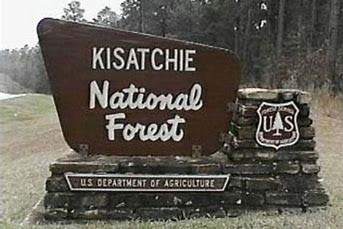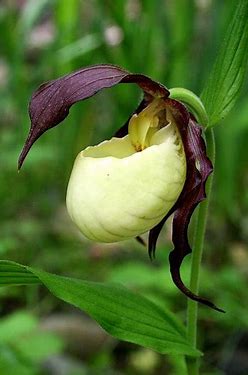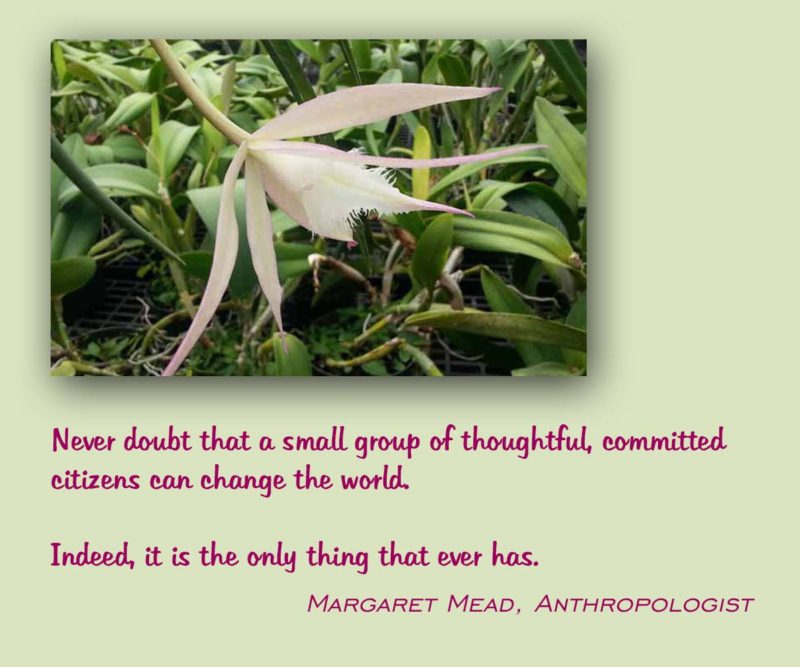
Lessons from the Kisatchie Forest
Amid the usual flurry of activity focused around our society show seasons, it is easy to forget that the history of SWROGA is steeped in a concern for our local species of orchids. Our early conservation efforts were devoted mainly to documenting the native terrestrial orchid species in each of our original seven state area. But the more our society members learned, the more we realized the need to support conservation at a higher level, through sustaining and enhancing known, and mainly localized colonies of endangered species, particularly in lands already being protected.
Conservation efforts to introduce endangered species back into the wild have had mixed results, due to the special challenges involved in simply growing many of our native terrestrial orchid species. The need for further research in this area quickly became apparent. As a result, the SWROGA Research Committee was formed in 2004 to provide funding and guidance in meeting this need. This committee, newly formed and chaired by Dr. Dick Jamison, set out to partner with existing conservation groups and literally provide the seed money for research.
The Research Committee’s initial project was proposed by the Central Louisiana Orchid Society (CLOS) and was approved in 2006 at the 90th Directors meeting. The goal was to help jumpstart a project to restore the rare Kentucky Lady’s Slipper Orchid (Cypripedium kentuckiense) to the Kisatchie National Forest (KNF) in central Louisiana. At this time these rare orchids were found in only four areas within the 600,000-acre National Forest.
In a tribute to the adage that one person can make a difference, the story of how this project got started is an amazing one. It was recounted in the introduction of the final report issued in 2012:
“This effort, to restore one of the most spectacular orchids native to the region, began with the initiative of a high school student. As a student and amateur botanist, Kevin Allen, located a flowering orchid on the KNF, caused it to be pollinated, and later collected a seed capsule. He sent the seed pod to Spangle Creek Labs in Bovey, MN, who are specialists in producing lady’s slipper orchids. The seeds were determined to be fertile.
Allen approached KNF botanists with the idea of producing plants for reintroduction efforts on the KNF. Not having expertise in growing orchid seedlings to plantable size, KNF botanists approached the Forest Service Southern Research Station (SRS) and Central Louisiana Orchid Society (CLOS) for help in evaluating the potential for producing stock suitable for restoration efforts … Thus began a collaborative effort to develop protocols for producing Kentucky lady’s slipper orchid seedlings with potential for reintroducing them into the KNF “
At the 90th Directors meeting, SWROGA initially approved an expenditure of $1,390, the amount needed to get 200 seedlings produced by Spangle Creek Labs. CLOS members used their own greenhouses to support various stages of the evaluations targeted at acclimating these seedlings to various greenhouse growing conditions. For orchid growers used to raising epiphytic seedlings in greenhouses, it was expected to be a straight-forward process. This proved not to be the case.
The conditions required for the seedlings to thrive were difficult to determine. One of the first difficulties encountered was the weather. It became apparent that starting these in the month of May meant subjecting these seedlings to temperatures warmer than optimal for their survival. Experimenters found better results from a cooler environment outside in the shade during the hot summer months.

With funding from the KNF and the SRS, another 700 seedlings were ordered in 2007 to further understand the growing conditions needed. With seedling grown in cooler conditions upwards of 60% of the seedlings survived outside of their in vitro initial growth. However, questions about additional nutrients arose as continual growth was difficult to achieve.
More tests and variables were required when these seedlings were planted in the forest where conditions were known to be suitable for this species of Cypripedium (presence of indicator species). Depth of planting (surface or subsurface), with or without nutritional additives (Osmocote), and dormancy period all were examined. The effects of each were reported but, still, nature throws its own variables into the mix and the drought conditions occurring during the evaluation times clouded the results.
The impact of mycorrhizal fungi on the survivability of the young plantlets was the last area to be studied. With no actual identification of the associated fungi, the most popular approach was to add soil from the known orchid sites in a process called “fungal inoculation”. With the remaining 100 plantlets, tests were run using soil and humus from the existing sites of the Cypripedium kentuckiense. After 6 months in a greenhouse, the 50 inoculated planting showed a marked improvement over the 50 non-inoculated plants (52% vs. 35%).
The results of these evaluations were considered inconclusive but the direction for future work became clear to the SWROGA Research Committee. In 2010 SWROGA approved a proposal for an additional $1473 to provide Kevin Allen’s (by then a science teacher in Shreveport) training under the guidance of Dr Lawrence Zettler at his unique DNA research laboratory at Illinois College. Dr. Zettler is one of the leading authorities on identification of fungal genera associated with specific orchids. This training along with grants from KNF and SRS provided the base for generating their own supply of seedlings to continue evaluations to be conducted by Allen’s honor chemistry students.
There is more than one kind of “seed” to plant and we can be proud of the efforts of SWROGA’s Research Committee to not only further the field of research but to encourage the next generation of students to focus on orchid conservation.

